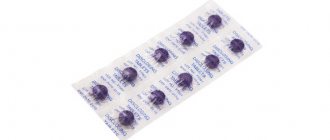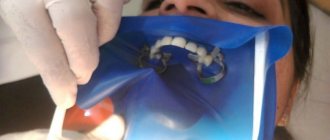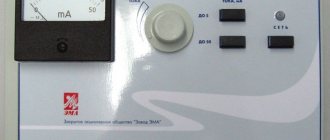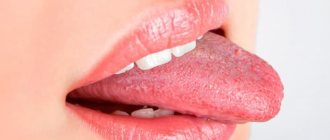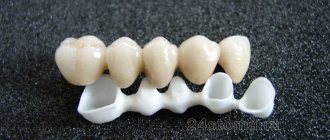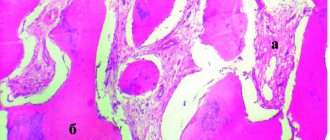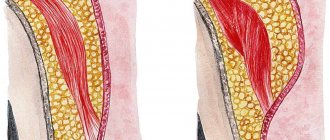The coronavirus infection has caused a lot of fear and anxiety. People were worried about their lives and health – both their own and those of their loved ones. Psychologists say that since the beginning of the pandemic, the number of depression and neurotic disorders has increased. Now that many have already recovered from “corona,” a new one has been added to the listed problems. It turned out that some patients experience olfactory and taste hallucinations after coronavirus.
To make an appointment, call the number 8(969)060-93-93.
About taste and smell
The perception of smell and taste are closely related. This is an evolutionarily determined feature of the human body. The smell helps to determine whether a product is edible or not. Moreover, if sour, sweet, bitter or salty can be identified by taste without the participation of smell, then recognition of complex information, for example, distinguishing between strawberries and raspberries, is possible only with the simultaneous analysis of smell and taste.
Information from the olfactory cells in the nose and the papillae on the tongue enters one part of the brain, where it is integrated and interpreted in a certain way. Since one part of the central nervous system is responsible for processing data about smells and tastes, when this part is damaged, combined hallucinations and changes in perception are often observed.
general characteristics
A pathological disorder of taste perception is called dysgeusia.
Such a “perversion” of taste sensations can be a sign of the development of neurological, hormonal, mental disorders and other diseases, including those caused by a deficiency of certain substances in the body. If the taste of the products remains unchanged, this diagnosis can be excluded. In this case, we are talking about the temporary persistence of an unusual taste in the mouth, and most often the problem disappears when the cause of its appearance is eliminated.
About hallucinations
Gustatory hallucinations are false sensations of taste. Appear regardless of food intake. A person can feel the sickly sweet taste of ordinary tap water, feel that any food “tastes” burnt, unbearably bitter or astringent. A person does not know how to get rid of constant unpleasant sensations. The inability to distinguish the taste of food and strange signals from the sensory organs lead to a decrease or loss of appetite.
Olfactory hallucinations after coronavirus usually occur simultaneously with taste ones. They often come to the fore. They can persist for several days in a row, become unbearable, and cause nausea. The two listed types of hallucinations, combined with a weakening of the body after Covid, worsen the condition of the nervous system and slow down recovery.
Help before diagnosis
In most cases, the following help to get rid of the symptom:
- keeping the oral cavity clean;
- regular and balanced nutrition;
- cessation of smoking, alcohol abuse;
- drink enough fluid during the day;
- moderate activity after meals.
You can temporarily remove the taste by thoroughly brushing your teeth, rinsing your mouth with water and lemon juice or baking soda, chewing gum, or special mouth fresheners.
What are they complaining about?
Theoretically, false perceptual cues can be pleasant, neutral, or aversive. But in practice, people much more often complain about unpleasant, difficult to bear or unbearable sensations. The most common variants are the repulsive sweetish taste and disgusting smell of fish.
Other possible complaints include combinations of burning, acetone and burnt onions, tobacco smoke, a rotten, “dead” feeling. Some people experience not non-existent, but altered tastes and smells; such conditions are called dysgeusia and parosmia.
External factors causing a metallic taste in the mouth
These reasons may be associated both with the influence of external factors and with physiological changes in the body. For example, metal can be felt when drinking certain brands of mineral water enriched with iron ions. Iron can reach your taste buds through untreated tap water passing through worn and rusty pipes. The solution in this situation is to use a high-quality cleaning filter.
The use of aluminum pots and cast iron cauldrons and frying pans may cause a metallic taste to be added to the traditional taste of food, especially if sour foods were cooked in it. In this case, the metal of the kitchen utensil reacts with food acids, salts are formed, and this is what is felt by the one who tastes this food.
Metal crowns can also cause a metallic taste, especially if they were installed a long time ago. Acidic foods can react with the metal ions in your dentures, creating a faint but very unpleasant taste.
Connection with COVID-19
Coronavirus affects not only the respiratory organs, but also other body systems, in particular the central nervous system. The neurotropic effect of the virus explains the damage to the center responsible for the perception of taste and olfactory sensations. Violations are detected in every fourth person who has recovered from coronavirus infection. At risk are patients who, during their illness, suffered from anosmia and agesia (complete or almost complete absence of smells and tastes).
On average, false sensations occur 4-5 months after recovery. Scientists do not yet have enough data to form a scientifically based opinion on this issue, but experts in the field of neurology suggest that the unpleasant effect may be associated with the gradual restoration of sensitive nerve trunks previously damaged by viruses.
Diagnostics
The first step in finding the cause of an unpleasant taste in the mouth should be a trip to the dentist: he will immediately determine the possible connection of the symptom with diseases of the teeth and surrounding tissues.
If the problem does not go away, you should consult a therapist: a specialist will help you understand the likely causes of the symptom. For an accurate diagnosis, the results of the following studies may be needed:
- clinical and biochemical blood tests (liver, kidney tests, glucose levels, lipid profile);
- tests to evaluate thyroid function;
- Ultrasound of the abdominal organs;
- fibrogastroduodenoscopy (FGDS);
- pH-metry of the stomach;
- tests for Helicobacter pylori infection;
- electroencephalography (EEG), magnetic resonance imaging (MRI) of the head.
The choice of diagnostic algorithm depends on the most likely cause of the development of an unpleasant taste in the mouth.
About nerve restoration in simple words
Neurologists draw a parallel with the return of sensitivity after prolonged exposure to an uncomfortable position. When a person puts pressure on an arm or leg, they go numb. Then non-existent goosebumps begin to “run” along the limb. And only after this does normal sensitivity return.
The same thing happens with taste and smell. This is just an unpleasant period that needs to be lived through. True, returning to normal in the case of COVID takes much longer. It is impossible to say exactly how much yet due to the small number and short duration of observations. It takes 2 to 5 years to obtain reliable statistical information.
Most Russian researchers agree that symptoms should disappear approximately six months after illness . That is, unpleasant sensations, on average, will last from 1 to 2 months. German doctors agree with this position, but are more inclined to 2 months. Italian scientists are more pessimistic. They believe that features are fully returned after 80 days.
Treatment
The best and most effective method of treating a symptom is to eliminate the cause of its occurrence. If the bad taste in your mouth is caused by a dental problem, it is important to get rid of tooth decay or other diseases as soon as possible.
If an unpleasant taste occurs due to pathology of certain organs and metabolic disorders, the doctor prescribes treatment for the underlying disease.
Conservative therapy
Depending on the characteristics of the symptom, to eliminate it, the doctor may prescribe drugs from the following groups:
- antiseptics;
- antacids;
- choleretic drugs;
- hypoglycemic agents;
- antidotes and detoxification drugs.
The doctor selects treatment individually. The treatment regimen depends on the causes of the taste, its severity, concomitant diseases and other features of the clinical case.
Sometimes, to get rid of the taste in the mouth, you have to resort to medications. Photo by JESHOOTS.com: Pexels
Physiotherapy
Methods of physiotherapeutic treatment in cases of unpleasant taste in the mouth help to cope with chronic inflammatory and metabolic processes, and eliminate other symptoms of pathology.
For example, for diseases of the ENT organs, rinsing with sea salt solutions, ultrasound treatment and UV irradiation, and therapeutic inhalations are used.
Warming procedures are contraindicated for patients with acute conditions - inflammation, likelihood of bleeding, severe pain.
What to do
The exact recipe has not yet been found; research in this area continues. According to experts in the field of sensory disorders, training will be useful. It is recommended to inhale essential oils of lemon, clove and rose daily. This will help the brain become familiar with smells again and learn to recognize them, and restoring the sense of smell will help normalize taste sensations.
It is important to maintain peace of mind, eliminate stress and not “work yourself up”, fearing that the changes will remain forever. In the vast majority of cases, everything returns to normal over time. Strong experiences can provoke a deterioration in mental state, and this will have a bad effect on well-being and on the body’s ability to heal itself. If it is difficult to independently cope with feelings about taste hallucinations after Covid, you should seek help from a psychologist or psychotherapist.
Content
- Diagnosis of taste disorders in children
- Causes of taste disorders in children
Taste plays a huge role in a child’s life. They are responsible for the sensitive papillae, which are located on the surface of the tongue.
The gustatory system is closely related to the sense of smell. When a child’s taste is impaired, the sense of smell usually also suffers. Source: Kotova I.B., Kanarkevich O.S. Psychology of taste and perception // Humanization of education
By the time of birth, the baby’s peripheral part of the taste analyzer is already well developed. A newborn's taste buds are located on a wider surface than those of an adult. In addition to the tongue and the posterior wall of the nasopharynx, they are located on the inner surface of the cheeks, hard palate, and mucous membrane of the lips. A baby has a higher threshold of taste sensations than an adult. When introducing unfamiliar food, a child may refuse to eat due to unusual sensations. At the age of two months, children already distinguish 4 basic tastes, and a three-month-old baby is able to distinguish the concentrations of taste stimuli. As children grow, they learn to analyze nuances of taste more subtly.
If the symptom does not go away
Partial restoration of smell and taste is considered as evidence of a favorable prognosis. You need to wait until the process is completed. If the disturbances persist for 2 or more months and do not change over time, you should be examined in detail by a neurologist and otolaryngologist . Hallucinatory phenomena, parosmia and dysgeusia can be provoked not only by COVID, but also by a number of other diseases.
A prolonged period of rehabilitation can be considered as an indication for therapeutic measures to restore peripheral sensory nerves. The therapeutic program includes medications to improve microcirculation, anticholinesterase drugs and vitamin complexes, primarily containing B vitamins.
Taste perception in patients with type 2 diabetes mellitus (literature review)
Diabetes mellitus remains one of the most dramatic problems in clinical medicine. First of all, this is due to its wide distribution, severity of complications, disability, high mortality, complexity of pathogenesis, and the lack of clear understanding of the causes and mechanisms of development of this disease to date.
Type 2 diabetes mellitus is called a multifactorial disease with an extremely complex etiology and pathogenesis, which is now being solved at the molecular gene level [29].
Statistical data from both domestic and foreign studies show that from 1% to 3% of the world's population suffers from this chronic lifelong pathology and their number is steadily increasing every year. Children have also become more likely to suffer from diabetes, and from a very early age [3, 6]. The annual increase in this disease is predicted to be approximately 5–7% [21, 23].
The manifestation of type 2 diabetes mellitus can be preceded by insulin resistance and hyperinsulinemia for decades. The problem of insulin resistance is particularly acute, as it is associated with the occurrence and development of severe micro- and macroangiopathies, damage to the function of the vascular endothelium [1, 5, 23].
Along with impaired secretion, insulin resistance is a major component of type 2 diabetes. Insulin resistance syndrome is manifested by hyperinsulinemia, dyslipoproteinemia, hypertension and decreased fibrinolysis, i.e., risk factors for non-insulin-dependent diabetes mellitus and cardiovascular diseases. The biguanide metformin has long been used to treat insulin resistance. Newer drugs include troglitazone, a thiazolidinedione drug. This drug significantly reduces insulin resistance, but sometimes has toxic effects, particularly on the liver [10].
Data obtained by Kekalainen et al. [23], indicate that hyperinsulinemia and a group of associated risk factors for cardiovascular pathology are important prognostic factors for the development of diabetes mellitus over 8 years, regardless of family history of diabetes mellitus with the regulation of local and systemic circulation.
Researchers provide evidence of an increase in myocardial infarction in patients receiving intensive insulin treatment, especially when their level of glycosylated hemoglobin decreases. It is indicated that oral hypoglycemic drugs that do not belong to the sulfonylurea group (troglitazone, metformin) may reduce the indications for transferring patients to insulin.
Today, the question of the advisability of intensive insulin therapy in patients with type 2 diabetes mellitus with macroangiopathy remains open and controversial [10, 14].
One of the main manifestations of diabetes mellitus is considered to be an increase in blood sugar levels, i.e. hyperglycemia. Most authors believe that it plays a major role in the development of diabetic complications.
It has been shown that in patients with diabetes mellitus, hyperglycemia causes an increase in the oxidative process, which leads to intensified lipid peroxidation of cell membranes [22]. These disorders initiate oxidative stress in the vessels, activating transcription factors in the cells of the vascular wall, which ultimately leads to the progression of atherosclerosis [8].
Gopaul et al. [20] concluded that oxidative stress is an early process in the progression of type 2 diabetes mellitus and may precede the development of endothelial dysfunction and insulin resistance.
According to James et al. [22] hyperinsulinemia is the main element uniting obesity, diabetes mellitus and arterial hypertension.
Huang et al. [21] identified a relationship between lipoprotein concentrations and blood coagulation parameters in elderly patients with type 2 diabetes mellitus, showing an increase in blood coagulation ability and a decrease in fibrinolysis, especially in those who had suffered a cerebral infarction in the past. These changes aggravate the course of diabetes mellitus and are directly related to the development of vascular complications of type 2 diabetes mellitus. The incidence of fatal outcomes reached 44.7% [19].
The data obtained suggest that in the blood of diabetic patients there is a fraction of highly atherogenic multimodified lipoprotein particles, which can play a significant role in the processes of accelerated atherogenesis.
Shah et al. [27] concluded that in hyperinsulinemia and hyperglycemia, increased levels of plasma free fatty acids cause disruption of glucose metabolism in women by inhibiting glucose utilization throughout the body, glucose uptake into muscles, and suppression of glucose production in internal organs. Thus, increased levels of free fatty acids cause disturbances in glucose metabolism in women.
Age is also an important factor in the development of diabetes. In old age, diabetes is in most cases quite mild and patients often do without insulin injections; in young people, diabetes is characterized by a more severe course, requiring daily insulin injections [3, 18, 22].
Uncontrolled type 2 diabetes mellitus is defined as persistent fasting hyperglycemia > 300 mg/dL or an increase in glycosylated hemoglobin levels above the upper limit of normal by 100% or more, repeated severe hypoglycemia, sharp fluctuations in glucose levels, repeated episodes of diabetic ketoacidosis, frequent absences from school, or work. Due to the decreased immune status in patients with diabetes, the percentage of infectious complications is quite high (ulceration of the lower extremities is 25%). Hospitalization is often necessary due to complications of diabetes mellitus from the cardiovascular system, nervous system, kidneys and other organs, as well as due to infection, surgery and other indications [6, 9, 24].
The age- and sex-adjusted relative risk of mortality from all causes was 1.51 for newly diagnosed diabetes according to American Diabetes Association criteria. A fasting glucose concentration of 7.0 mmol/L or higher regardless of plasma glucose concentration on an oral glucose tolerance test, 1.60 for newly diagnosed diabetes according to WHO criteria, and 1.98 for isolated hyperglycemia on an oral glucose tolerance test. glucose tolerance [32].
In summary, undiagnosed diabetes is associated with increased mortality from all causes using all criteria. Increased mortality due to cardiovascular disease is associated only with diabetes diagnosed by fasting glucose concentration. Mortality in this population was similar using American Diabetes Association and WHO criteria [32].
At the current level of development of diabetology, the use of high technologies and research methods at the molecular and genetic levels allows us to better understand the subtle molecular mechanisms of the pathogenesis of diabetes mellitus and especially its late complications [7].
Based on this, early diagnosis and prevention of diabetes, vascular and other complications should be carried out [2, 3].
In recent years, a significant increase in the life expectancy of patients with type 2 diabetes has been achieved, as well as a significant improvement in the quality of life of these people [6, 9, 15]. However, with the increase in the life expectancy of patients, a new, extremely important problem has come to the fore - the increase in the frequency and severity of late complications of the disease with damage to almost all organs and systems [6, 9].
The incidence of diabetes mellitus in the population also has a special social significance, which lies in the fact that it leads to early disability and mortality due to late vascular complications. These include: microangiopathy (retinopathy, nephropathy and gastropathy), macroangiopathy (myocardial infarction, stroke, gangrene of the lower extremities) [17].
Diabetic cardioneuronephro- and retinopathy still remain fatal complications of diabetes mellitus, as they inevitably lead to the death of patients from terminal renal and heart failure [24].
The most promising and economical direction for healthcare in the development of modern diabetes care is the prevention of vascular complications of diabetes mellitus, which is possible only with early diagnosis and timely prescription of pathogenetic therapy.
According to Stender S. et al. [28] 30–75% of diabetic patients have impaired gastrointestinal tract function. The incidence of gastrointestinal damage in diabetes can be largely explained by autonomic neuropathy, primarily damage to the vagus nerve. In this case, local disturbance of microcirculation, especially noticeable when teeth and gums are damaged, is of certain importance. Thus, clinical signs of diabetic periodontitis in the form of pasty and bleeding gums, multiple caries, dental plaque, loosening and loss of teeth, almost always accompanied by pyorrhea, are combined with microangiopathy in approximately 2/3 of patients with diabetes [3].
Also in these patients both the stomach and intestines are affected; diabetic enteropathy develops, leading to expansion of the stomach and disruption of the regulation of digestive processes, constipation and diarrhea; A serious complication associated with nervous disorders develops - sphincter atony and fecal incontinence. Diabetes mellitus does not initiate the occurrence of peptic ulcers. With poor compensation of diabetes mellitus, the normal functioning of the liver is disrupted and hepatomegaly develops [13, 14].
Diabetes is accompanied by diseases of the gastroduodenal system, which is determined by the severity of carbohydrate metabolism disorders. Disorders of metabolic processes in patients with diabetes mellitus are secondary in nature, which is associated with changes in the motor function of the stomach and duodenum, as well as with destructive processes in the mucous membrane. The autoimmune reaction to Helicobacter pylori in the mucous membrane of the stomach and duodenum underlies the dystrophic and necrobiotic processes leading to ulcerogenesis [13, 14].
The work carried out can serve as the basis for creating new approaches to the treatment of patients with type 2 diabetes mellitus, taking into account changes in the gastroduodenal system.
In the pathogenesis of diabetes, disorders of the nervous system, including sensory neuropathies, have been especially intensively studied in recent years [23]. As a rule, diabetes is characterized by multiple damage to a number of peripheral nerves (polyneuropathy), but in some cases diabetic mononeuropathy may develop [17, 19]. It develops as a result of damage to endoneurial vessels, which is confirmed by the presence of a relationship between the thickness of the basement membrane of these vessels and the density of nerve fibers in the peripheral nerve in diabetes mellitus. More than 50% of patients with diabetes suffer from diabetic polyneuropathy.
The frequency of damage to the nervous system in diabetes mellitus depends not only on the duration of the disease, but also on the age of the patients. Most often they appear in patients over 50 years of age after any long period of diabetes mellitus [3, 15].
In an attempt to uncover the reasons for the failure of therapy with antihyperglycemic drugs in adult patients with diabetes mellitus without obesity, Sa et al. [26] name two factors: autoantibodies to islet cells or reversible beta cell refractoriness. These studies showed that the failure of treatment with glucose-lowering drugs is due to the presence of autoantibodies and beta-cell desensitization. Beta cell autoantibodies may be present in up to 44% of patients. But in patients with autoantibodies, beta cells retain the ability to restore their function after a period of rest as a result of insulin therapy. The preservation of the response of beta cells with function restored as a result of insulin therapy to the action of glucose-lowering drugs is not known and requires study.
In the world literature, the role of specialized therapy for patients with type 2 diabetes mellitus is acutely raised, taking into account modern advances in clinical diabetology [18].
The most common is the use of metformin (Metfogamma), which reduces weight gain, reduces the need for insulin and improves glycemic control, improving quality of life. Treatment with metformin should be recommended when switching to insulin therapy for type 2 diabetes. It has been shown that metformin does not significantly affect blood pressure in patients with type 2 diabetes mellitus receiving intensive insulin therapy [14, 16]. This drug should be taken 1 tablet 1-2 times a day, during or after meals. Dosages of 500, 850 and 1000 mg are prescribed individually depending on the concentration of glucose in the blood.
The similarity of the glucose-lowering effects of pioglitazone, metformin and glimepiride in patients with newly diagnosed type 2 diabetes mellitus was revealed. The peculiarities of the action of glimepiride (Amaril) in relation to the rapid decrease in the concentration of glucose in the blood plasma, which is taken in the morning before meals, 1 tablet (initial dose 1 mg) under the control of blood glucose concentration, were noted. A beneficial effect of pioglitazone (a derivative of the thiazolidinedione series) on the concentration of fasting plasma glucose and fatty acids was also noted, which should be taken into account when choosing drugs individually [14]. Pioglitazone is prescribed orally once a day (regardless of meals). Monotherapy with pioglitazone 15–30 mg/day; if necessary, the dose can be increased to 45 mg/day.
In diabetes mellitus, pathology of the oral cavity is often detected. Moreover, some lesions are associated with diabetes mellitus, others, although not so closely related to this disease, are nevertheless significantly more common among people with diabetes mellitus [11, 12].
The oral mucosa, in particular the tongue, indicates the state of health and primarily reflects the condition of the oral cavity and gastrointestinal tract [13]. The oral cavity is the earliest and most subtle indicator of various metabolic disorders in the body, and, therefore, studying the state of the oral mucosa in an age-related aspect can help in resolving some diagnostic and differential diagnostic problems [11, 12, 13].
The taste sensory system is defined today as a morphophysiological system that provides the perception and analysis of chemicals entering the oral cavity, and also reflects the functional state of the body.
A decrease in the number of taste buds leads to a decrease in taste sensitivity [11, 12]. In patients with type 2 diabetes mellitus, this is facilitated by impaired autoregulation of cerebral blood flow with autonomic neuropathy [11].
Loss of taste significantly reduces the quality of life and worsens the general and social state of human health [11, 12].
Italian researchers conducted a large-scale study on the etiology of taste disorders in the population. The authors found that taste disturbance is caused by a wide range of reasons: nervous, endocrine, metabolic, infectious, immunological, medicinal, surgical. The gustatory sensory system is vulnerable to both internal and external factors [25].
The activity of the taste sensory system is closely related to the functioning of the digestive apparatus. On the one hand, from the receptor section of the taste sensory system, the separation of saliva and gastric juice is reflexively “triggered”, influencing the motility of the digestive system; on the other hand, the level of activity of taste-perceiving structures depends on the degree of filling of the gastrointestinal tract with food. Thus, the sensitivity of taste buds, which is maximum on an empty stomach, decreases significantly after eating [25]. The gustatory sensory system plays a significant role in the preferential choice of certain food products [25]. When food loses taste and smell, as well as denervation of the oral cavity, destruction of the thalamic nuclei or the cortical part of the taste analyzer, taste analysis is partially or completely impaired [15].
In some cases, taste distortions are caused by diseases of internal organs and metabolic disorders; a feeling of bitterness is noted in diseases of the liver and gallbladder, a feeling of acidity in gastric dyspepsia, a feeling of sweetness in the mouth in severe forms of diabetes mellitus [4].
Against the background of the development of changes in the oral mucosa with symptoms of atrophy, increased keratinization of the epithelium and the appearance of erosions on the tongue, a progressive decrease in the number of functioning fungiform papillae and distortion of taste perception were noted [11, 12].
Many diseases of the mucous membrane of the oral cavity and tongue, being a reflection of any pathological processes in other organs, lead to changes in the functional state of the taste analyzer. At the same time, a change in taste sensitivity can be an early sign of a disease in the body [8]. But, despite the fact that these symptoms may have diagnostic significance, there are few works devoted to the study of the taste sensory system in this aspect [7].
Voros-Balog et al. [31] believe that “geographical” tongue (5.7%) may indicate an allergic disease. When examining the tongue of 1017 schoolchildren, in 35.11% of cases some changes in the language were found, including those due to diabetes [31].
In the activity of the taste analyzer, a significant role is played by such a food humoral factor as the content of glucose in the blood, which is the leading component of the nutritional biological need that determines the formation of the nutritional motivational state [7].
Disturbance of glucose homeostasis is a pathogenetic sign of diabetes mellitus. This disease affects people of different age and social groups, among which the number of young people increases every year. In the early stages of carbohydrate metabolism pathology, when a person feels healthy, the first signs of imbalance in clearly established glucose homeostasis and changes in the sensitivity of various perceptive structures, including the taste sensory system, may appear [7, 12].
To study taste perception in diabetes, along with the threshold method, the functional mobility method was used, and it was shown that impaired taste perception is correlated with the severity of the disease and blood sugar levels [7]. Peculiarities of taste sensitivity in diabetes mellitus in children have been noted [7].
Impaired perception processes in diabetes mellitus can also extend to the olfactory analyzer. Thus, Takayama et al. [30] describe acute loss of the sense of smell in a 61-year-old man with type 2 diabetes mellitus. After several years of successful treatment with diet (1600 kcal) and without medication, the symptoms of hyposmia disappeared. These authors believe that hyposmia was caused by diabetic mononeuropathy of the first cranial nerve (n. olfactorius).
The state of glucose homeostasis, maintained by the corresponding functional system, is one of the criteria for health and well-coordinated operation of the system. This position is confirmed by the study of taste perception in practically healthy people with intravenous administration of glucose, as well as by the study of the humoral background of the gastrolingual reflex [13].
Taking into account the data known in the literature on the role of the taste receptor apparatus in the activity of the whole organism, and especially in diabetes mellitus, the study of threshold density, determination of the functional mobility of the taste buds of the tongue can be used for diagnostic purposes for the prevention, early detection and timely treatment of neuropathy in patients diabetes mellitus type 2.
Literature
- Ametov AC Insulin secretion and insulin resistance: two sides of the same coin // Problems of endocrinology. 2002. Issue. 48, no. 3. pp. 31–37.
- Andreeva E.I. Daily blood pressure profile and optimization of arterial hypertension therapy in patients with diabetes mellitus: Author's abstract. dis. ...cand. honey. Sci. Rostov-on-Don. 2005. 24 p.
- Balabolkin M.I. Diabetology. M.: Medicine, 2000. 471 p.
- Balabolkin M.I. Insulin resistance and its significance in the pathogenesis of carbohydrate metabolism disorders and type 2 diabetes mellitus // Diabetes mellitus. 2002. No. 1. P. 12–20.
- Blagosklonnaya Ya. V., Babenko A. Yu., Krasilnikova E. I. Diabetes mellitus type II (non-insulin dependent) // New St. Petersburg Medical Gazette. 2001. No. 3. P. 17–23.
- Davydov A.L. Hemodynamic and metabolic disorders in patients with type 2 diabetes mellitus in combination with coronary heart disease: Abstract of thesis. dis…. Dr. med. Sci. M., 2000. 315 p.
- Zaklyakova L.V., Kurepova T.B. Vascular adhesion molecule-1 - a marker for early diagnosis of diabetic microangiopathies / Current issues in the diagnosis, treatment and prevention of the most common diseases of internal organs: Materials of the 4th therapeutic forum. Tyumen, 2005. pp. 16–17.
- Konyshev V. A. Food habits and vagaries of taste // Med. help. 2002. No. 1.S. 39–42.
- Mychka V. B., Gornostaev V. V., Chazova I. E. Cardiovascular complications of type 2 diabetes mellitus // Cardiology. 2002. No. 4. pp. 73–77.
- Naumenkova I.V. Clinical and diagnostic aspects of insulin resistance in patients with type 2 diabetes mellitus on insulin therapy: Author's abstract. dis. ...cand. honey. Sci. M., 2002. 20 p.
- Redinova T. L., Zlobina O. G., Merzlyakova O. G. Condition of the oral cavity in patients with diabetes mellitus / Modern issues in dentistry: Materials of the twelfth interregion. scientific-practical conf. dentists. Izhevsk State honey. acad. Izhevsk, 2000. pp. 148–152.
- Tokmakova S.I., Bondarenko O.V., Sysoeva O.V. The influence of age and metabolic disorders in diabetes mellitus on the oral mucosa / Dentistry. Ross. scientific forum with international with the participation of “Dentistry on the threshold of the third millennium”, February 6–9, 2001 MSMSU. M., 2001. pp. 117–118.
- Khvorostinka V.N., Krivonosova E.M. Pathogenetic features of the state of the gastroduodenal system in patients with diabetes mellitus // Medical practice. 2004. No. 3. P. 9–13.
- Belcher G., Schernthaner G. Changes in liver tests during 1-year treatment of patients with Type 2 diabetes with pioglitazone, metformin or gliclazide // Diabet. Med. 2005. Vol. 22, No. 8. P. 973–979.
- Ding R. et al. The effect of taste and consistency on swallow physiology in younger and older healthy individuals: a surface electromyographic study // J. Speech Lang Hear Res. 2003. Vol. 46, No. 4. P. 977–989.
- Douek IF, Allen SE, Ewings P., Cale EAM, Bingley PJ Continuing metformin when starting insulin I patients with Type 2 diabetes: A double-blind randomized placebo-control trial // Diabet. Med. 2005. Vol. 22, No. 5. P. 634–640.
- Duby II et al. Diabetic neuropathy: an intensive review // Health Syst Pharm. 2004. Vol. 61, No. 2. P. 160–173.
- Feinglos MN, Saasd MF, Pi-Sunyer EX Effects of liraglutide (NN2211), a long-acting GLP-1 anologue, on glucaemic control and body weight in subjects with Type 2 diabetes // Diabet. Med. 2005. Vol. 22, No. 8. P. 1016–1023.
- Gazis A., Pound N., Macfarlane R. Mortality in patients with diabetic neuropathic osteoarthropathy // Diabet. Med. 2004. Vol. 21, No. 11. P. 1243–1246.
- Gopaul NK, Manraj MD, Nebe A. Oxidative stress could precede endothelial dysfunction and insulin resistance in Indian Mauritians with impaired glucose metabolism // Diabetologia. 2001. Vol. 44, No. 6. P. 706–712.
- Huang S., Zhong R., Liang M. Relationship between lipoprotein (a) and activity of coagulation in old diabetic mellitus // China J. Mod. Med. 2004. Vol. 14, No. 17. P. 34–36.
- James AP, Watts GF, Mato JCL The effect of metformin and rosiglitazone on postprandial lipid metabolism in obese insulin-resistant subjects // Diabetes. Obesity and Metab. 2005. Vol. 7, 64. P. 381–389.
- Kekalainen P., Sarlund H., Pyorala K. Hyperinsulinemia cluster predicts the development of type 2 diabetes independently of family history of diabetes // Diabetes Care. 1999. Vol. 22, No. 1. P. 86–92.
- Rachmani R., Slavachevski I., Berla M. Teaching and motivating patients to control their risk factors retards progression of cardiovascular as well as microvascular seguelae of Type 2 diabetes mellitus—a randomized prospective 8-year follow-up study // Diabet. Med. 2005. Vol. 22, No. 4. P. 410–414.
- Rossig H. et al. Haloperidol and clozapine antagonize amphetamine disruption of latent inhibition of conditioned taste aversion //Psychopharmacology. 2003. Bd. 107, No. 3. S. 263–270.
- Sa JR, Silva R. C, Nasri E. Non-obese adult onset diabetes with oral hypoglycemic agent failure: Islet cell autoantibodies or reversible beta cell refractoriness // Braz. J. Med. and Biol. Res. 2003. Vol. 36, No. 10. P. 1301–1309.
- Shah PV Elevated free fatty acids impair glucose metabolism in women // Diabetes. 2003. Vol. 52, No. 1. P. 38–42.
- Stender S., Schuster H., Barter R. Comparison of rosuvastatin with atorvastatin, simvastatin and pravastatin in achieving cholesterol goats and improving plasma lipids in hypercholesterolaemic patients with or without the metabolic syndrome in the MERCURY I trail // Diabetes, Obesity and Metab, . 2005. V. 7, No. 4. P. 430–438.
- Tabaei BP, Engelgau MM, Herman WH A multivariate logistic regression equation to screen for dysglycaemia: Development and validation // Diabet. Med. 2005. Vol. 22, No. 5. P. 599–605.
- Takayama S., Sasaki T. Acute hyperemia in type 2 diabetes // J. Int. Med. Res. 2003. Vol. 31, No. 5. P. 466–468.
- Voros-Balog T., Vincze N., Banoczy J. Prevalence of tongue lesions in Hungarian children // Oral-Dis. 2003. Vol. 9, No. 2. P. 84–87.
- Wild SH, Smith EB, Lee AJ Criteria for previously undiagnosed diabetes and risk of mortality: 15-year follow-up of the Edinburgh Artery Study cohort // Diabet. Med. 2005. Vol. 22, No. 4. P. 490–496.
D. A. Kahramanova A. L. Davydov , Doctor of Medical Sciences, Professor V. A. Olkhin , Doctor of Medical Sciences, Professor MGMSU, Moscow
Contact information for authors for correspondence
Cost of services
| CONSULTATIONS OF SPECIALISTS | |
| Initial consultation with a psychiatrist (60 min.) | 6,000 rub. |
| Repeated consultation | 5,000 rub. |
| Consultation with a psychiatrist-narcologist (60 min.) | 5,000 rub. |
| Consultation with a psychologist | 3,500 rub. |
| Consultation with Gromova E.V. (50 minutes) | 12,000 rub. |
| PSYCHOTHERAPY | |
| Psychotherapy (session) | 7,000 rub. |
| Psychotherapy (5 sessions) | 30,000 rub. |
| Psychotherapy (10 sessions) | 60,000 rub. |
| Group psychotherapy (3-7 people) | 3,500 rub. |
| Psychotherapy session with E.V. Gromova (50 minutes) | 12,000 rub. |
This list does not contain all prices for services provided by our clinic. The full price list can be found on the “Prices” , or by calling: 8(969)060-93-93. Initial consultation is FREE!
Causes
Bitterness in the mouth after eating is a rather unpleasant symptom.
Depending on the circumstances and with what frequency bitterness in the mouth occurs, the etiology of this symptom can be assumed:
- Every morning you feel bitterness - this is a symptom of liver failure or gallbladder disease.
- After physical activity - liver disease.
- After eating - diseases of the stomach, intestines and gall bladder.
- When eating fatty or fried foods, diseases of the gallbladder, liver and bile ducts occur.
- Constant causeless bitterness is a symptom of cholecystitis, cholelithiasis, endocrine or psychological disorders, as well as cancer of the stomach, esophagus or intestines.
- Rare and quickly passing sensations of bitterness are the consequences of taking medications or stress.
Is it possible to ignore
Not paying attention is not the best solution. Quite a lot of time passes between illness and the occurrence of coronavirus infection. In such circumstances, it is difficult to say unequivocally that hallucinations are a consequence of infection. Most often, hallucinatory manifestations are provoked by cerebral damage against the background of cerebral circulation disorders, tumors, traumatic brain injuries and inflammatory pathologies of the central nervous system.
In addition, this symptom can be observed in schizophrenia, epilepsy, psychoses of various etiologies, exogenous and endogenous intoxications, and taking potent medications. Sometimes the cause is damage to the nasal mucosa, dental diseases and diseases of the digestive system. For your own peace of mind, it is better to exclude all other causes of hallucinations, and only then begin to restore your sense of smell and taste according to the schemes proposed for post-Covid syndrome.
You can make an appointment by phone 8(969)060-93-93.
When to see a doctor?
Eliminating the cause of the development of a symptom most often completely eliminates all its manifestations, so it is important to consult a doctor in a timely manner (Table 1).
Table 1. Taste in the mouth: when should you seek medical help?
| Type of taste in the mouth | Reasons to see a doctor |
| Taste Blood | If the symptom is not associated with accidental damage to the oral mucosa, you should begin the examination with a trip to the dentist. If necessary, the specialist will refer you to other doctors for consultation. |
| Metallic taste | You need to undergo examination in the toxicology department if the taste appears after poisoning with chemical agents. It is also important to consult a doctor if you suspect bleeding of unknown location or galvanism. |
| Bitter taste | If bitterness in the mouth persists for several days, and is also accompanied by the appearance of plaque, nausea or vomiting, you should make an appointment with a gastroenterologist. This is probably how the body “signals” about disturbances in the gastrointestinal tract. |
| Bitter taste | If your taste changes regularly without connection with the amount of sweets in your diet, you should consult a therapist or endocrinologist. |
| Taste of acetone | You should definitely see an endocrinologist if the symptom occurs due to diabetes. When following a low-carbohydrate diet, it is also important to choose a new diet from a nutritionist. |
Folk remedies
Bitterness in the mouth may be due to medication
In cases where no serious pathologies are found, folk recipes will help get rid of the feeling of bitterness in the mouth.
- Flax seed. To prepare the drink, take a quarter cup of ground flaxseed, add half a liter of boiled water and leave. Drink half a glass in the morning.
- Vegetable juices. Freshly squeezed juices from potatoes, carrots and celery increase the secretion of saliva and thereby help with bitterness in the mouth.
- Decoction of calendula flowers. For half a liter of boiling water you need to take 20 grams of calendula flowers, bring to a boil and leave. It is recommended to take 2 glasses per day for a month.
- Sunflower oil. Keep the slightly heated oil in your mouth for several minutes. The feeling of bitterness should disappear.
- Corn silk. A decoction of corn silk has choleretic properties, it contains fiber, B vitamins, and vitamin E. It helps cleanse the body, get rid of bad breath and stimulate the production of digestive enzymes.
- Rose hip decoction. Rosehip decoction is a choleretic agent and a real vitamin bomb. This drink not only relieves the feeling of bitterness in the mouth after eating, it also stimulates the immune system.
The choice of treatment for bitterness in the mouth depends on the disease that caused this sensation. No matter how harmless this symptom may seem, the cause of its occurrence can be quite serious, so you should not neglect this signal from the body and listen to it: get examined and begin treatment.
